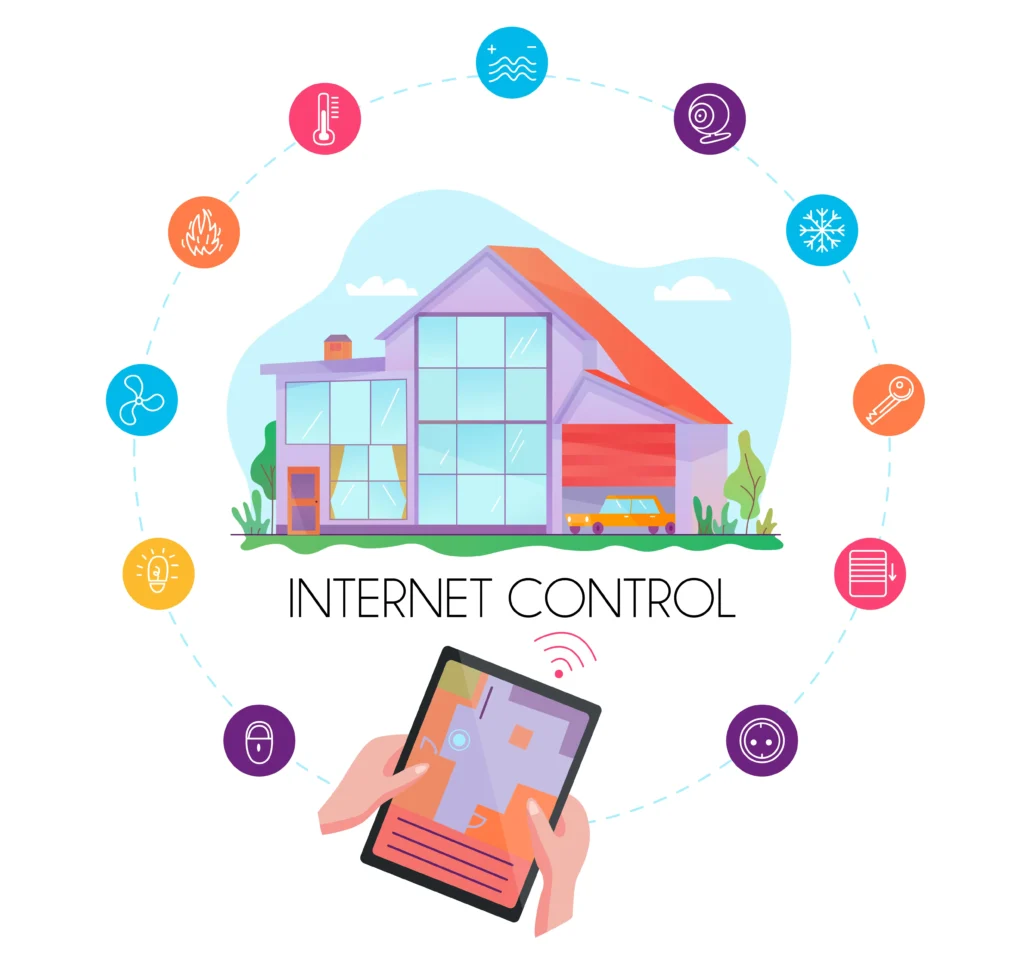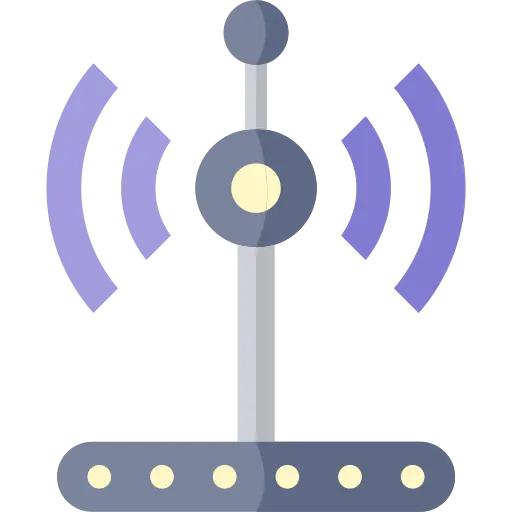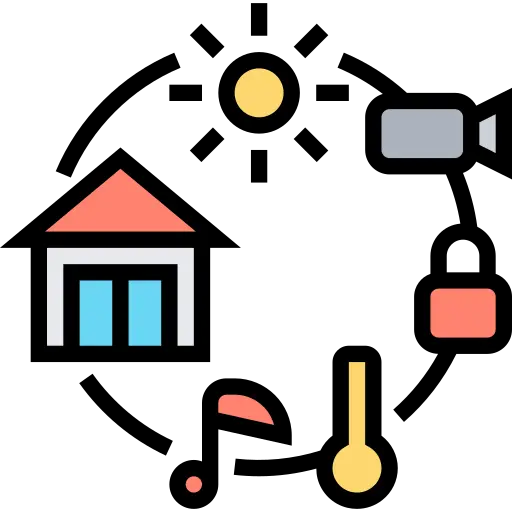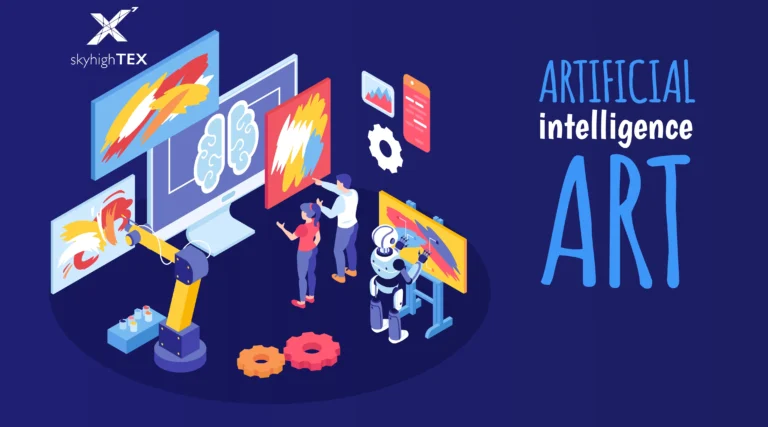IoT in the Home: Opportunities and Challenges
Welcome to our blog about IoT in the home! The internet of things, or IoT, is quickly becoming an integral part of our lives, and it’s no different when it comes to our homes. With the help of IoT devices, we can now automate many of our daily tasks, make our homes more energy-efficient, and keep an eye on things while we’re away.
But while IoT has many benefits, it also comes with its fair share of challenges. The complexity of setting up and integrating devices, along with concerns about privacy and security, can make it difficult for some to take advantage of all that IoT has to offer.

That’s why we’re here! Our goal is to help you navigate the opportunities and challenges of IoT in the home, so you can make the most of this exciting technology.
In this blog, we’ll take a look at some of the benefits of IoT in the home, including increased convenience and automation, improved energy efficiency and cost savings, and enhanced home security and monitoring. We’ll also explore some of the challenges, such as privacy and security concerns, limited interoperability between devices, and dependence on internet connectivity.
But don’t worry! We’ll also provide tips and strategies for overcoming these challenges and making the most of your smart home. From securing your devices to choosing compatible and user-friendly devices, we’ll give you all the information you need to create the smart home of your dreams.
So whether you’re new to IoT or a seasoned pro, we hope you’ll join us on this journey as we explore the world of IoT in the home. Let’s unlock the full potential of this exciting technology together!
What is IoT?

If you’re new to the world of IoT, or the Internet of Things, it can be a bit overwhelming at first. But don’t worry, we’re here to help! At its simplest, IoT refers to the idea of connecting everyday objects to the internet. This allows those objects to send and receive data, making them smarter and more connected than ever before.
IoT in the Home
Now, when it comes to IoT in the home, we’re talking about devices and appliances that can be controlled and monitored remotely through a smartphone or other connected device. This includes things like smart thermostats, security cameras, and even home appliances like washing machines and refrigerators. With IoT in the home, you have the power to control and monitor your home from anywhere, at any time.
The popularity of IoT in the home is increasing rapidly and it’s become an essential part of many people’s daily lives, making it easier to manage and monitor your home, improve energy efficiency, and even make your home a safer place. But with so many different devices and options available, it can be tough to know where to start. That’s why we’re here to help you navigate the opportunities and challenges of IoT in the home, so you can make the most of this exciting technology.
Benefits of IoT in the Home
Increased Convenience and Automation

One of the biggest benefits of IoT in the home is the increased convenience and automation it provides. With smart devices like a thermostat, you can adjust the temperature of your home remotely using your smartphone, ensuring you always come home to a comfortable temperature. With a smart lock, you can let people into your home remotely, without needing to leave a physical key. With a voice-controlled smart speaker like Amazon Echo or Google Home, you can control your lights, play music, and more with just your voice. The possibilities are endless, and with the right devices, you can create a truly smart home that works for you.
Improved Energy Efficiency and Cost Savings
Another major benefit of IoT in the home is improved energy efficiency and cost savings. Smart devices like thermostats, lighting controls, and appliances can be programmed to turn off or reduce power usage when not in use, which can help you save money on your energy bill. Smart power strips can help you identify which devices are consuming the most energy in your home and can be controlled remotely.
Enhanced Home Security and Monitoring

IoT in the home also provides enhanced home security and monitoring. With smart cameras and doorbells, you can keep an eye on your home and see who’s coming and going, even when you’re not there. Smart door locks and alarms allow you to secure your home remotely and be alerted of any unusual activity. With these devices, you can have peace of mind knowing that your home and loved ones are safe and secure.
Examples of popular IoT devices for the home
Smart Thermostat, Smart locks, Voice-controlled smart speakers, Smart Power strips, Smart Cameras and doorbells, Smart light bulbs, Smart Fridge, Smart washing machines, etc. are some examples of popular IoT devices for the home that you can consider depending on your needs and budget. Keep in mind that IoT technology is continuously evolving, and new devices and features are being introduced regularly, so you may want to do some research and check for new devices before making a purchase.
Challenges of IoT in the Home
Privacy and Security Concerns
As with any technology that connects to the internet, IoT in the home comes with privacy and security concerns. As your devices collect and transmit data, there’s a risk that this information could be accessed by unauthorized individuals. Hackers can potentially gain access to your personal information, control of your devices, and even access your home. It’s important to take steps to secure your IoT devices, such as changing default passwords, updating software, and being vigilant about phishing scams.

The complexity of Setup and Integration
Another challenge of IoT in the home is the complexity of setting up and integrating devices. With so many different devices and platforms available, it can be difficult to know how to connect everything together and make it work seamlessly. It’s important to do your research and understand what each device is capable of before making a purchase, and also be prepared to spend some time setting it up and learning how to use it.
Limited Interoperability between Devices
Another challenge is the limited interoperability between devices, which means that devices from different manufacturers may not always be able to communicate with each other. This can make it difficult to control your devices in a cohesive way, and it’s important to research whether a device is compatible with other devices you already own, or if the platform is open to integration with other systems.
III.4 Dependence on Internet Connectivity IoT devices rely on internet connectivity to function, which means that if your internet connection goes down, your devices may not be able to work as intended. It’s important to be aware of this limitation and to have a backup plan in place in case of an internet outage. Also, ensure that your home network is robust enough to handle all the connected devices.
Overall, while IoT in the home can bring many benefits, it’s important to be aware of the potential challenges and take steps to mitigate them. By being informed and proactive, you can enjoy the convenience and automation that IoT devices can provide, without sacrificing your privacy or security.
Navigating the Challenges
Tips for Securing IoT Devices in the Home

One of the biggest challenges of IoT in the home is secure. To keep your devices and personal information secure, it’s important to take a few simple steps.
- Change default passwords: Many IoT devices come with default passwords that are easy to guess. It’s important to change these to a strong and unique password that can’t be easily cracked.
- Use strong, unique passwords: A strong password is one that is at least 12 characters long and includes a mix of letters, numbers, and special characters. Avoid using easily guessed information such as your name, address, or birthdate. It’s important to use a different password for each device and avoid reusing the same password.
- Update software regularly: Manufacturers often release software updates that address security vulnerabilities. By keeping your software up to date, you can ensure that your devices are as secure as possible.
- Be cautious of phishing scams: Scammers may try to trick you into giving them personal information or login credentials by sending you suspicious emails or messages. It’s important to be on the lookout for these and to never click on links or enter personal information unless you are certain that it’s legitimate.
Another important step is to be careful of phishing scams. Scammers may try to trick you into giving them personal information or login credentials, so it’s important to be on the lookout for suspicious emails or messages.

By following these tips, you can help ensure that your IoT devices and personal information are as secure as possible. It’s important to keep in mind that no device can be completely secure, but following these guidelines will help to minimize the risks and ensure that your smart home is as safe and secure as possible.
How to Choose Compatible and User-Friendly Devices
Another challenge of IoT in the home is compatibility between devices. To ensure that your devices work seamlessly together, it’s important to do your research and understand what each device is capable of before making a purchase. Look for devices that are compatible with your existing technology, such as your smartphone or tablet, and consider devices that use the same platform, such as Amazon Alexa or Google Home. It’s also important to choose devices that are user-friendly and easy to set up and use.
Importance of Creating a Smart Home Strategy

Last but not least, having a smart home strategy is important when it comes to making the most of IoT in the home. This means considering what devices you need, how they will work together, and how they will fit into your lifestyle. It’s also important to think about future upgrades and devices that you may want to add. A smart home strategy will help you prioritize your purchases and make the most of your smart home.
In conclusion, IoT in the home can offer many benefits, but it’s important to be aware of the potential challenges. By following best practices for security, choosing compatible and user-friendly devices, and creating a smart home strategy, you can navigate these challenges and make the most of this exciting technology.
Conclusion
In conclusion, IoT in the home has the potential to bring many benefits such as increased convenience, automation, energy efficiency, and home security. However, it’s important to be aware of the potential challenges such as privacy and security concerns, the complexity of setup and integration, limited interoperability between devices, and dependence on internet connectivity.
But don’t let the challenges discourage you! By following best practices for security, choosing compatible and user-friendly devices, and creating a smart home strategy, you can navigate these challenges and make the most of this exciting technology.
We hope that this blog has provided valuable information and insights about IoT in the home and has given you a better understanding of the benefits and challenges that come with it. Remember that IoT technology is continuously evolving, and new devices and features are being introduced regularly, so it’s always good to do some research and stay informed.
If you’re thinking about creating a smart home or adding new IoT devices to your existing smart home, we hope you feel more confident and empowered to take the next steps. We encourage you to explore the possibilities and make the most of this technology to make your life easier, safer, and more convenient.
Additional resources and References
When it comes to IoT in the home, there is a lot of information to take in. That’s why we’ve compiled a list of additional resources and references to help you continue your research and stay informed.
- Websites: There are many websites dedicated to IoT and smart home technology, such as CNET, TechRadar, and ZDNet, that provide in-depth reviews, news, and information about various devices and platforms.
- Online forums and communities: Joining online forums and communities such as Reddit’s r/smarthome or Quora’s IoT section can be a great way to get answers to specific questions and to connect with other people who are also interested in IoT and smart home technology.
- Manufacturers’ websites: Most of the manufacturers of IoT devices have websites where you can find detailed information about their products, as well as software updates, user manuals, and other resources.
- Technical blogs and videos: There are many blogs and videos that provide tutorials, tips, and tricks on how to set up and use IoT devices, they may also provide information on how to troubleshoot issues or even hack and mod those devices.
- Books: If you prefer reading, there are a number of books available on the subject of IoT and smart homes, such as “The Internet of Things: How Smart TVs, Smart Cars, Smart Homes, and Smart Cities are Changing the World” by Michael Miller or “Smart Things: Ubiquitous Computing User Experience Design” by Mike Kuniavsky.
- The Intersection of IoT and AI – Outstanding Future
- AI: 10 Ways the IoT is Transforming Industries







